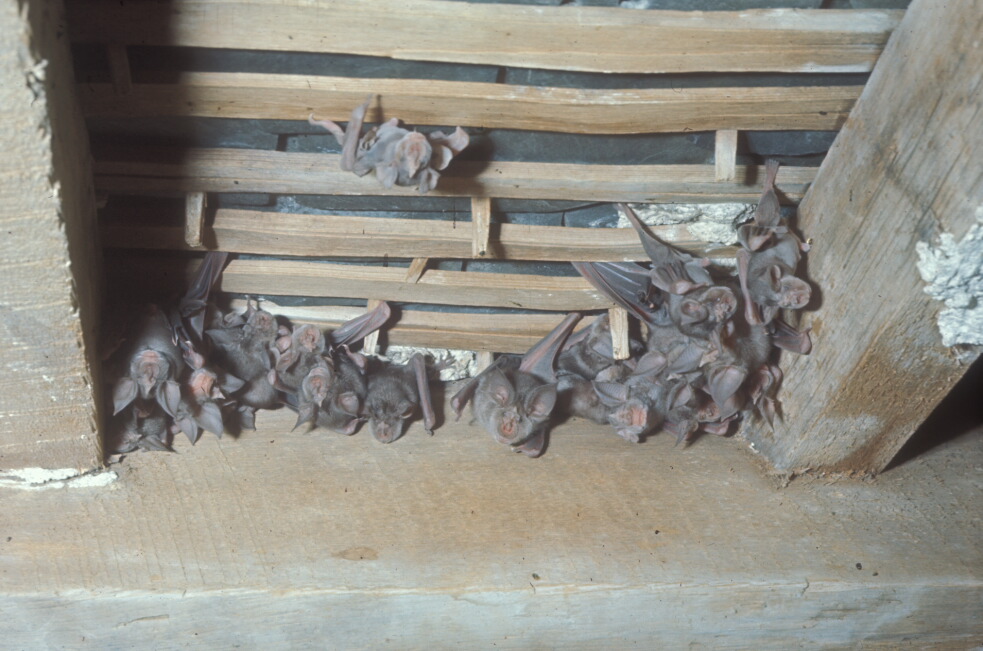The View page displays a submission's general information and data. Ver vídeo
Información del envío
Número del envío: 1561
ID del envío: 1570
Submission UUID: 2bbf67f8-c2b5-4428-9d1f-510284c9079f
Submission URI: /index.php/es/form/wizard-fichatraductologica
Created: Mar, 27/09/2022 - 09:59
Completed:
Changed: Mar, 27/09/2022 - 10:57
Remote IP address: (desconocido)
Enviado por: Varinia Fernandez
Idioma: Español
Is draft: Sí
Página actual: Vista previa
Form Ficha Terminológica: Ficha Traductológica
Término
day-roost
Inglés (Estados Unidos) (214)
Ciencias Biológicas, Químicas y de la Salud (403)
Biología (407)
Mastozoología
Site where bats and other mammals who do not create maternity colonies rest or sleep individually or in group during day hours, including buildings, bridges, caves, rock formations, tree bark, tree cavities, bat boxes, leaf litter, and other types of foliage
Tara, H. (2020). Bats and where they call home. Illinoisbats.org. https://www.illinoisbats.org/?p=804
This may explain their often broad geographical distributions, the range of habitats they occur in and their dispersal patterns, as well as their significant role in ecosystem services. They use different day roost sites that include caves, rock shelters, buildings in public spaces, wells, abandoned houses, ancient monuments and mines (Kumar et al., 2015; Lučan et al., 2016); and in many cases these sites are outside of natural habitats. The use of human-built structures for roosting is a form of adaptation, whether this has been caused by natural habitat loss or range expansion, and in either case attest to their ability to modify aspects of their life history, as is also the case with their foraging on cultivated plants.
Ramanantsalama, R. V., Goodman, S. M., Dietrich, M., & Lebarbenchon, C. (2022). Interaction between Old World fruit bats and humans: From large scale ecosystem services to zoonotic diseases. Acta Tropica, 231(106462), 106462. https://doi.org/10.1016/j.act
Español
refugio diurno
Nominal (221)
México (Mex.) (192)
Sitios que proveen a los murciélagos y otros mamíferos un espacio para su reproducción, hibernación y crianza, protección contra depredadores, ya sea de forma individual o colectiva.
León Paniagua, L., Lorenzo, C., Ortíz Ramírez, D., & Naranjo, E. (2006). Selección de refugios por tres especies de murciélagos frugívoros (Chiroptera: Phyllostomidae) en la Selva Lacandona, Chiapas, México. Revista mexicana de biodiversidad, 77(002), 261
La amplia variedad de refugios diurnos utilizados por murciélagos representa un complejo proceso de selección para cubrir requerimientos tanto ecológicos como fisiológicos. Algunos de los factores que afectan dicha selección son la abundancia y disponibilidad de sitios de refugio, flujo interno de aire, temperatura, intensidad de luz, seguridad ante potenciales depredadores y proximidad a zonas de forrajeo (Kunz, 1982; Rodríguez-Durán, 2003; Ávila-Flores & Medellín, 2004; de Sousa Barros, Bernard, & Lopes Ferreira, 2020). Por lo anterior, este proceso resulta crucial para los murciélagos debido a que influye en la ecología, organización social y supervivencia de sus poblaciones (Kunz, 1982; Kunz & Lumsden, 2003).
View of Diurnal roosts of the bat Rhynchonycteris naso (Chiroptera: Emballonuridae) in Laguna de Términos, Campeche, Mexico. (s/f). Ucr.Ac.Cr. Recuperado el 27 de septiembre de 2022, de https://revistas.ucr.ac.cr/index.php/rbt/article/view/43595/45534
Multimedia

Externa
https://www.bats.org.uk/about-bats/where-do-bats-live/bat-roosts/maternity-roosts
Notas para la traducción
posaderas, nidos
